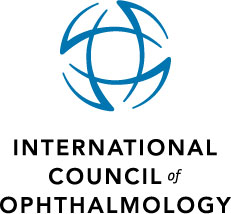Patient: 81 years of age, female, BCVA 0.5 at OD, 1/20 LT at OS.
General Medical History: treatment with 200 mg amiodarone daily for 12 months for recurrent ventricular tachycardia.
Ocular Medical History: AMD
Purpose: to present amiodarone keratopathy
Methods: Colour Photography Anterior Segment
Findings:
Colour Photography Anterior Segment : golden-grey deposits in a vortex fashion in corneal epithelium of both eyes, below the central cornea.
Discussion:
It was reported by Wasielica-Poslednik et al. (1), that amiodarone keratopathy and Fabry-induced cornea verticillata cannot be distinguished by conventional slit-lamp microscopy. They found that patients with amiodarone keratopathy showed hyper-reflective intracellular inclusions in basal epithelial cells. Amiodarone deposits were more reflective and of grossly different size.
Literature:
(1) Wasielica-Poslednik J, Pfeiffer N, Reinke J, Pitz S. Confocal laser-scanning microscopy allows differentiation between Fabry disease and amiodarone-induced keratopathy. Graefes Arch Clin Exp Ophthalmol. 2011 Nov;249(11):1689-96.
-------------------------- --------------------------
-------------------------- --------------------------
-------------------------- --------------------------
-------------------------- --------------------------
-------------------------- --------------------------
-------------------------- --------------------------







